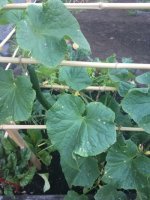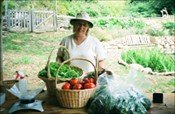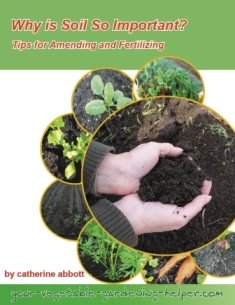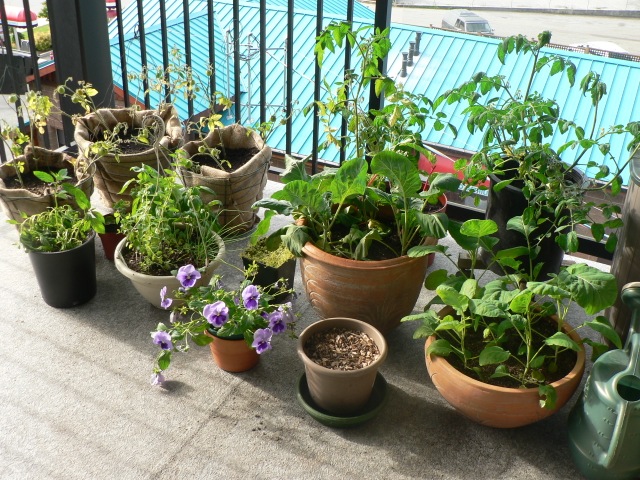Why Fall Gardening? A Guide to a Bountiful Harvest
Fall gardening starts as the warm days of summer give way to the cool, crisp air of autumn. Many gardeners might be tempted to hang up their tools for the season however, fall is an excellent time to grow a wide range of vegetables. With proper planning and care, you can enjoy a bountiful harvest well into the colder months. Here’s a comprehensive guide to help you make the most of your fall vegetable garden.
 Red cabbage
Red cabbageFall gardening offers several advantages:
• Cooler Temperatures: Many vegetables thrive in cooler weather. The reduced heat stress on plants can result in better flavor and higher yields.
• Fewer Pests: As temperatures drop, many common garden pests become less active, reducing the need for pest control.
• Extended Harvest: By planting in the fall, you can extend your growing season and continue harvesting fresh produce long after the summer crops have faded.
• Soil Quality: The cooler, wetter conditions of fall can improve soil structure, making it easier to work and more conducive to root growth.
Choosing the Right Vegetables
The key to successful fall gardening is selecting crops that can tolerate cool weather and mature quickly enough to beat the first frost. Here are some of the best vegetables to plant in the fall:
• Leafy Greens: Spinach, lettuce, kale, arugula, and Swiss chard are all excellent choices. They thrive in cooler weather and can often withstand light frosts.
• Root Vegetables: Carrots, radishes, beets, and turnips are perfect for fall. They develop their sweetest flavors in the cool soil and can be harvested well into the late fall.
• Brassicas: Broccoli, cauliflower, Brussels sprouts, and cabbage are ideal for fall planting. These hardy plants often produce their best crops in the cooler months.
• Garlic and Onions: Although not harvested in the fall, planting garlic and onions in late autumn allows them to establish roots before winter, leading to larger bulbs the following summer.
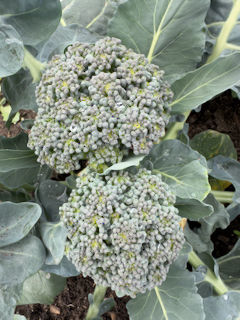 Broccoli for fall eating
Broccoli for fall eatingPreparing Your Garden
Before planting your fall vegetables, it’s essential to prepare your garden properly:
1. Clear Out Summer Crops: Remove spent plants and any debris from your summer garden. This helps reduce the risk of pests and diseases carrying over to your fall crops.
2. Amend the Soil: Add compost or aged manure to your soil to replenish nutrients depleted by summer crops. This will give your fall vegetables a good start.
3. Mulch: Applying a layer of mulch around your plants can help retain soil moisture, suppress weeds, and protect plant roots from temperature fluctuations.
Timing Your Planting
Timing is crucial in fall gardening. To ensure a successful harvest, you’ll need to know your first expected frost date and work backward to determine when to plant. Most seed packets will list the number of days to maturity, which can help you calculate the best planting time.
• Direct Sowing: Many fall vegetables, such as root crops and leafy greens, can be directly sown into the garden. Be sure to water regularly, as fall can often be dry.
• Transplants: For slower-growing crops like broccoli and Brussels sprouts, consider starting seeds indoors or purchasing transplants. This will give them a head start and increase your chances of a successful harvest.
Extending the Season
To maximize your fall harvest, consider using season-extending techniques:
• Row Covers: Lightweight fabric row covers can protect your crops from early frosts and pests, allowing you to harvest for a few weeks longer.
• Cold Frames: Cold frames are low, transparent structures that trap heat and protect plants from cold weather. They’re perfect for extending the growing season of fall vegetables.
• Mulching: A thick layer of mulch can insulate the soil and protect root crops, allowing you to harvest even after the first frost.
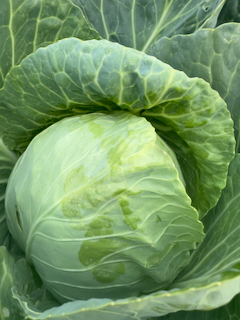 Grow cabbage for fall harvest
Grow cabbage for fall harvestHarvesting and Storage
One of the joys of fall gardening is the ability to harvest fresh produce when other gardens have already been put to bed. Keep an eye on your crops as temperatures drop, and harvest as needed. Root vegetables can often be left in the ground until you’re ready to use them, while leafy greens can be picked continuously.
For crops like carrots, beets, and turnips, consider storing them in a cool, dark place such as a root cellar or a refrigerator. This will allow you to enjoy your fall harvest well into the winter months.
Conclusion
Fall vegetable gardening is a rewarding way to extend your growing season and enjoy fresh produce long after summer has ended. With the right preparation, timing, and care, your fall garden can provide a bountiful harvest that will keep your table filled with healthy, homegrown vegetables well into the colder months. So don’t pack away your gardening tools just yet—there’s still plenty of time to get growing!
Return from Fall Gardening to Homepage
Recent Articles
-
Vegetable Gardening Frustrations: Lessons for a Better Harvest
Oct 29, 24 07:37 PM
Every vegetable gardener knows that while the rewards are sweet, the vegetable gardening frustrations can be a bit bitter. -
Small Space Vegetable Gardening
Sep 23, 24 05:06 PM
Small Space Vegetable Gardening - Tips for growing vegetables in small spaces. -
Why Fall Gardening?
Aug 16, 24 12:24 PM
Fall Gardening: A guide to a Bountiful Harvest.
